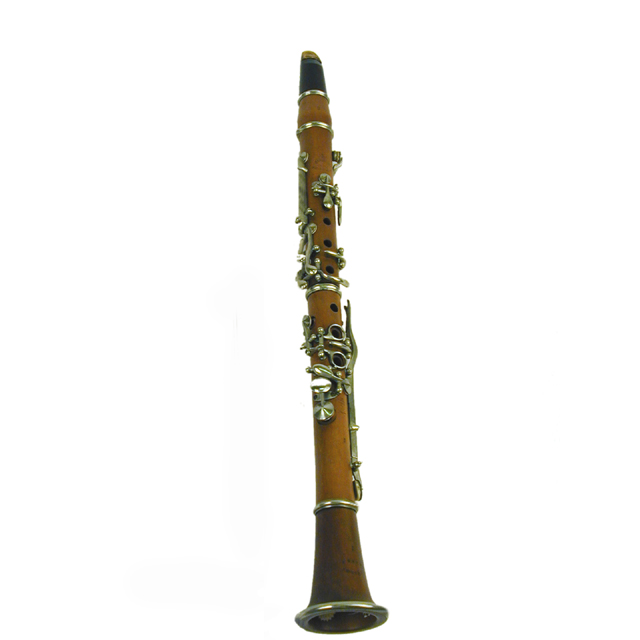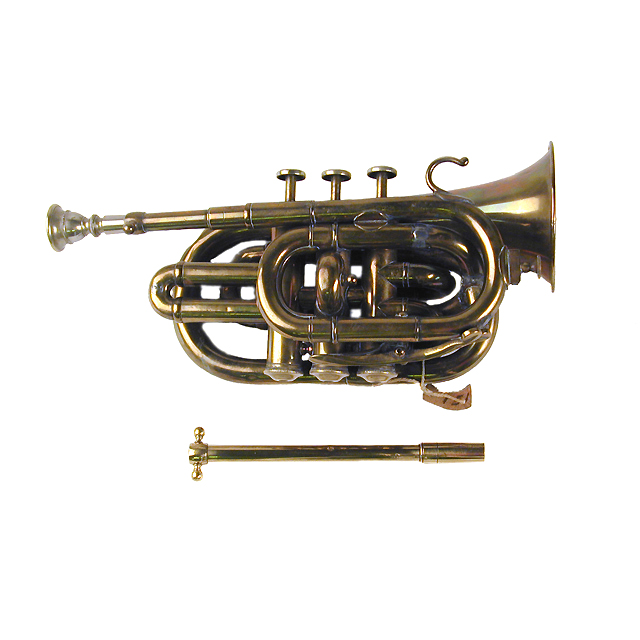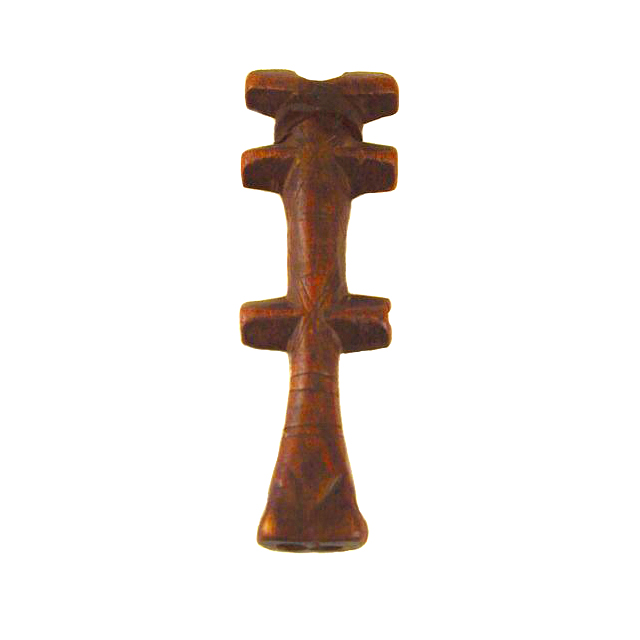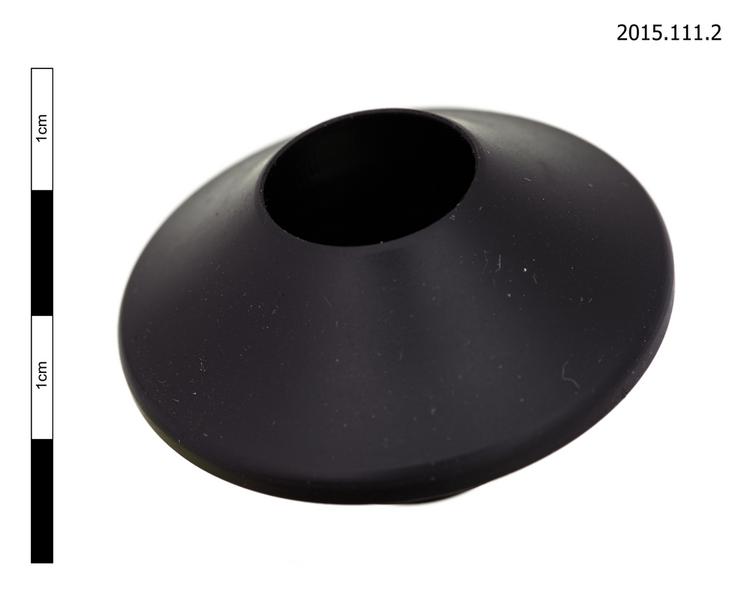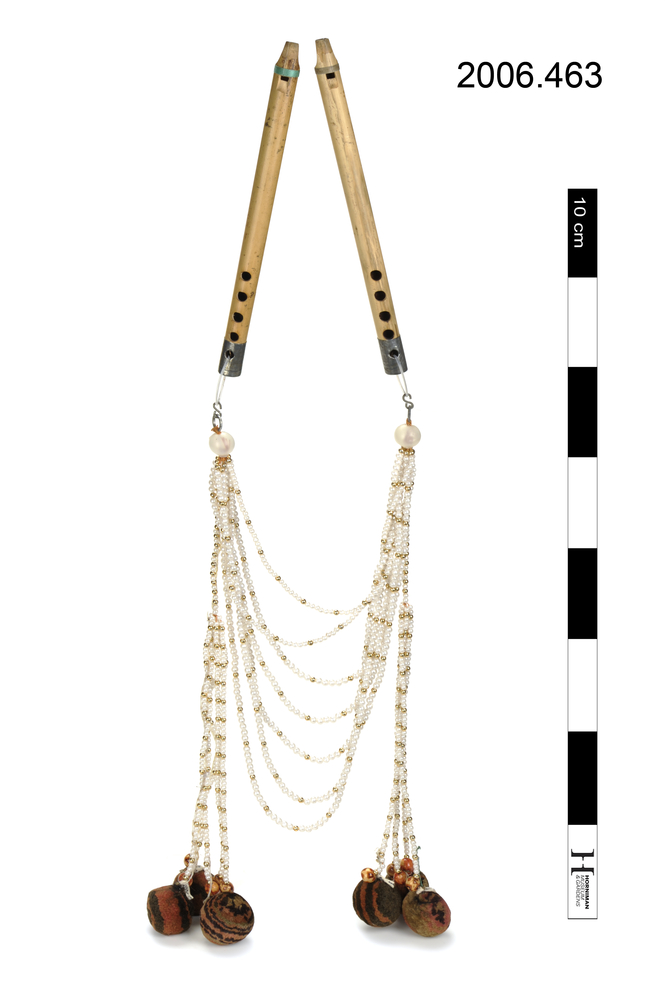
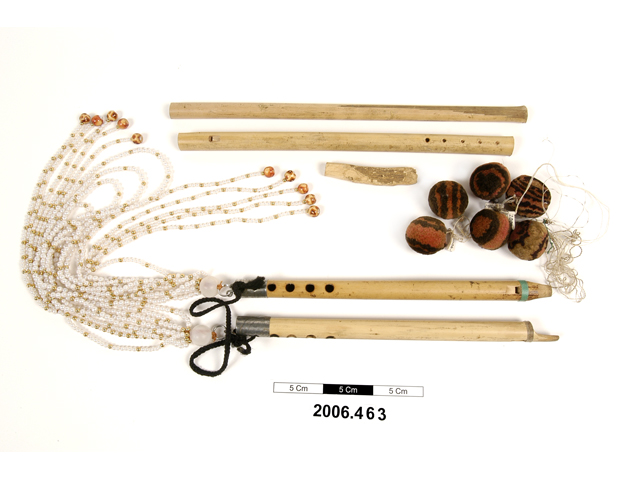
A pair of algoza duct flutes, each with 5 fingerholes and a metal ferrule at the distal end. The block, known in Punjabi as the 'tongue ' of the instrument is made of karir wood (Capparis aphylla Roth.), 'which is similar to teak' according to the maker. The instruments are bound at the proximal ends with thread. Suspended from the algoza at the distal end is a string of ornamental beads, to which decorative pom-poms are attached; Sample of 'karir' (Capparis aphylla Roth.) wood for block of algoza duct flute; Sample of bamboo for algoza duct flute; Half-finished algoza duct flute.
Both instruments are blown simultaneously. Only three (parallel) holes of the five fingerholes are covered with the fingers, the rest are blocked. The choice of holes to be blocked is dependent on the range of the voice of the instrument (or singer) to be accompanied. The raags played on the algoza are bharvi and sarang. Circular breathing technique is used by the player to achieve a continuous sound. Played with toombi (spike lute) and in ensemble for traditional dancing.



